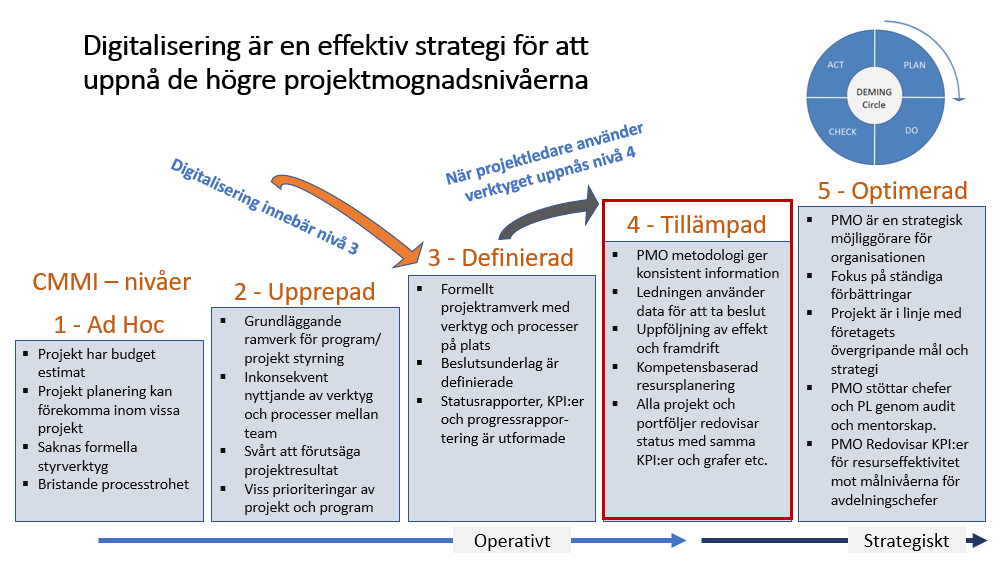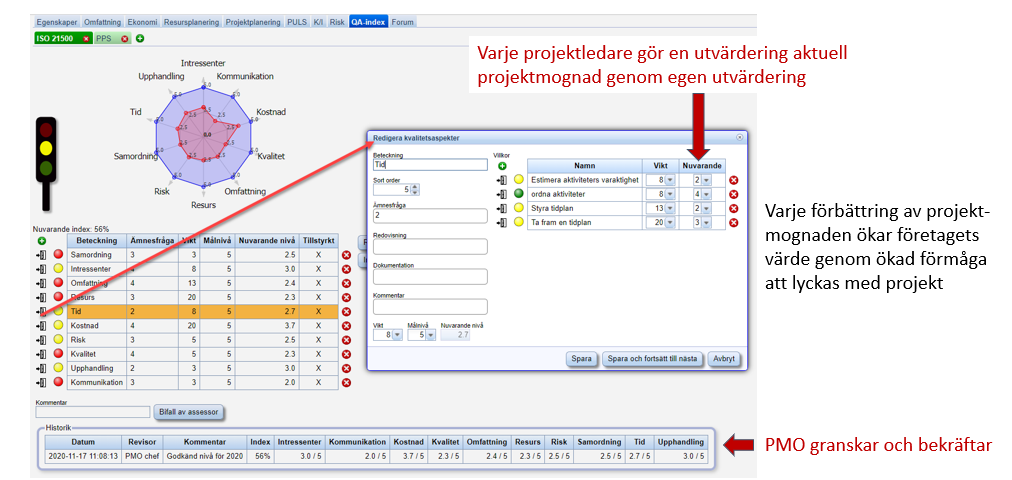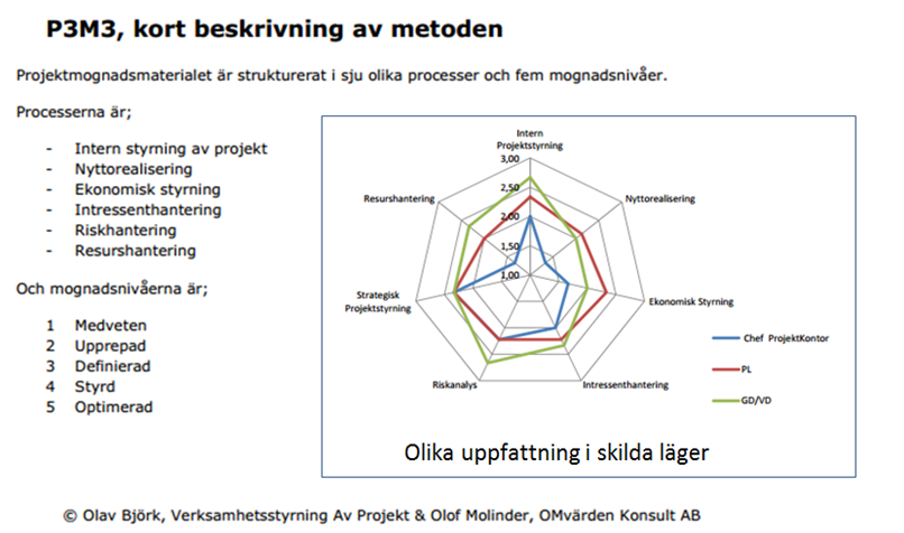Project maturity is a term used to describe an organization's ability to implement projects efficiently and successfully and has developed a standardized and structured methodology for managing projects, leading to increased efficiency and quality of project work. It may include the use of tools and techniques to manage projects, such as project planning, scheduling and resource allocation.
To evaluate their own project maturity, organizations can use different models, such as the Capability Maturity Model Integration (CMMI) and the Project Management Maturity Model (PMMM), which provide a structured framework to assess the organization's ability to execute projects effectively and identify areas where improvements can be made.
By digitizing the project office, an organization is directly at level 3 with well-defined governance. Level 4 is achieved through a combination of change management and managers being consistent in only accepting decision support and progress reporting through digitalization's IT support.
Level 5, continuous improvement, requires the measurement of KPIs that can be compared between departments and business areas. Such KPIs are, for example, resource and project efficiency. The PDCA method, which is used in Project Excellence Preparation, is an example of how to work with continuous improvement.
With digitalization and self-assessment
Self-assessment against control questions gives each project manager responsibility for his or her own work and has a powerful learning effect. In addition to directly benefiting their own skills, a project manager can stay one step ahead of the project office's review. This tends to be particularly motivating and the project office's review becomes an opportunity to shine and have one's competence confirmed.
Digitalization in the form of a tool support with a built-in project model makes traditional project management training in project management redundant. Now you learn by doing the job with built-in support and with the support of a change manager with project management skills.
Example of a project maturity survey report. Two things to note. One is that project managers and senior managers have more confidence in their own project maturity than project office managers. The second is that the scale only covers level 3. Level 3 means that governance is defined. Level 4 means that defined governance is also used.


